Why Do You Need a Good E-Commerce Platform?
After you have completed your preliminary study, you have to select an e-commerce platform, establish your shop, and introduce your new project. And yes, this includes businesses that provide goods or services to other companies.
Due to the following:
- There’s a small probability to access here.
- There will be no development costs or technical complications.
- An extensible framework that enables your business to expand.
- Search for a platform with a sizable community of users and administrators who can attest to its success.
- Visit their forum, read their blog, and peruse their documentation.
First, let’s look at what e-commerce platforms can do for your online business.
What Is an Ecommerce Platform?
An e-commerce platform enables small and large online businesses to easily manage their marketing, websites, sales, and operations. Consider it the organization’s hub or headquarters. E-commerce platforms combine potent features with integrations to standard tools, allowing businesses to integrate operations and operate uniquely in forward-thinking E-commerce.
On-premise solutions lag with open SaaS e-commerce platforms as e-commerce technology grows. As businesses want more native user experience (UX) features in their products or backend improvements, a massive migration to SaaS and online commerce has emerged.
On average, SaaS allows businesses to enter the market in just over a month. SaaS e-commerce platforms take care of all aspects of software management, such as management tasks. Finally, headless commerce is an e-commerce solution that provides increased control over an online retailer’s front. Headless eCommerce, in which the cart is separated from the content management system, is the future of e-commerce.
What does this mean?
Rather than operating your website on an e-commerce platform, you can employ a CMS (content management system), such as WordPress, to create the user experience. Using Visual Studio Pro 2017 enables you to customize further and personalize your store while retaining the benefits of the industry’s best e-commerce platform.
Hosting a website
Ecommerce websites can host in one of two ways: self-hosted or cloud-hosted.
The bad news is that performing these updates may require you to shut down your website for an extended time.
The reality is that using this solution to manage an eCommerce website can be price, as programmers frequently use it to maintain and restore the site. If you can’t update your online shop without the help of a third party, you’ve effectively given that third-party control.
While this step entails a steep learning curve, it offers numerous benefits, including increased regulation of your online retail platform, increased data visibility, and better knowledge about data security.
When your business is very complicated, take this option. If not, you should consider migrating your eCommerce store to a cloud-hosted solution.
Cloud-based eCommerce platforms
Simply put, cloud-hosted e-commerce platforms monitor and manage your store’s uptime — the amount of time that service (or, in this case, a website) is accessible online.
Remember that not every cloud-hosted e-commerce platforms automatically install and updates. This capability is unique to SaaS commerce solutions.
Consider the Following When Choosing an Ecommerce Platform
You should choose an e-commerce platform that meets the needs of your online store.
However, your platform should have some native, excellent features.
Here are the following features you can use for your eCommerce platform:
- The hosting environment, domain name, uptime year-over-year, and bandwidth available must all be considered.
- A drag-and-drop e-commerce website builder comes with free, easy-to-use site themes that you can customize to your specifications.
- Broad app store featuring industry-leading service providers and integrations.
- When it comes to mobile apps and responsive websites, you’ve come to the right place.
- PCI compliance is required.
- Your inventory system is accessible to every sales channel.
- As are analytics, catalog management, and other essential eCommerce features, discounted prices and promotions are included.
- Outstanding customer service.
- Recovering abandoned shopping carts.
- Selling unlimited items such as physical or digital products is possible.
To remain competitive in the market, look for eCommerce software that incorporates advanced features into the platform and makes them available for free.
5 Things to Consider When Choosing an Ecommerce Platform
1. Initiate a free trial period by posing pertinent questions.
As with any other step in starting an online business, you should have a list of questions prepared to assist you in making the best decision for your store. Requesting assistance from sales or customer service is an option, as is signing up for a free trial to test the product’s features.
In any case, go over the following eCommerce planning checklist for each platform you’re considering. Verify the following when evaluating options for your company:
- All required components, such as drop-down menus and an editor, are included.
- Is it simple to operate — and, perhaps more importantly, do you feel at ease with it?
- It provides a reputable web hosting service. It eliminates the risk of your store going dark during peak hours!
- It is free to improve customer service.
- Provides support for the products you wish to sell (e.g., physical or digital products).
- How does the platform display all possible configurations if a product has variants? How do you handle that?
- You can sell directly to customers on Facebook, eBay, Amazon, and Pinterest without managing multiple inventories.
- It is mobile-friendly and easy to customize.
- Thanks to its excellent SEO optimization, a high ranking on Google and increased traffic to your store are possible.
- It is built using open APIs and is compatible with other applications.
- It is free to improve customer service.
- Provides resources (such as a blog) to assist you in acquiring the skills necessary to sell online and gradually expand your business.
Even after receiving responses to these questions, you should test the eCommerce solution before making a strategic decision.
Regarding eCommerce platform selection, the remaining steps are critical for new store owners to consider.
2. Create a pricing structure for the platform.
Ecommerce platforms do not come cheap.
They offer services that combine the requirements for multiple technologies into a single package:
- Hosting.
- Checkout.
- Payments.
- Compliance with the PCI Data Security Norms (PCI DSS) is required.
- Safeguards against fraud.
- DDoS attacks are categorized as cybercrime.
- Among them is analytics.
- Everything is organized for easy access on the backend of each eCommerce platform.
However, as pricing models for eCommerce platforms vary, you should conduct extensive research before deciding. Take note of the inclusions at each price point to ensure you’re getting the most for your money.
Are you wary?
Here are some eCommerce websites you should look for
When creating your website, Is it intended for whom?
Best Ecommerce Website for Businesses
The following table compares the best eCommerce website builders for small businesses:
- BigCommerce – Entrepreneurs and those who are expanding their businesses
- Shopify – Applications are encouraged from small businesses, hobbyists, and brands with less than 100 SKUs.
- Squarespace – Individuals who are bloggers, artists, or portfolio creators
- WooCommerce – Bloggers, small businesses, and hobbyists diversify their revenue streams through eCommerce.
- Wix – Anyone with little or no previous website-building knowledge may use Wix.
- Weebly – Smaller businesses, hobbyists, and newly opened retail establishments
- Volusion – Individuals and startup businesses
- Big Cartel – Explicitly designed for small businesses that do not require a sophisticated platform.
- GoDaddy – Hobbyists, self-employed individuals, and proprietors of small businesses
- Shift4Shop – Manufacturers on a smaller scale and new retailers.
- Opencart – Participation is encouraged for small companies and the general public.
- Prestashop – Customers looking for cloud-based platforms that are available for free.
As you can see, the costs associated with these well-known eCommerce platforms vary considerably (and total value). Conduct extensive research to determine the platform that will benefit your business the most.
3. Choose the right platform for your store’s design.
Your website’s design is vital to your business. It’s your first point of contact with your clients. Modern consumers demand superior web design and user experience. Theme or template selection is critical when setting up an online store. This task requires no CSS or HTML coding expertise.
Make your theme or template for instant differentiation and long-term growth. Most platforms mix free and paid themes. Begin with trials, choose your top eCommerce platforms, upload filler content to the backend, and then preview your site on multiple articles to find the best fit.
Keep in mind device size, usability, customization, and scalability. Want design ideas? Some of our favorite web design examples.
4. Evaluate the store’s functionality and usability.
One job shouldn’t require you to learn a lot of coding or have the extensive technical knowledge to be usable. It requires the platform to be simple to use, configure, and maintain over time.
The following are some things to watch out for:
The Configuration Process
Is a simple setup flow describing everything you need to know before launching, including loading products, configuring taxes, registering a domain name, and processing payments?
Management of products and SKUs
Once you’ve configured the basics, bulk uploading products from CSV files is a much faster way to add products to your catalog. Additionally, you should maintain an unlimited number of products, or SKUs. Furthermore, your platform certainly supports it, mainly if your catalog is large or growing. Since you can be at the App Store with just one click, you’ll want many one-click applications or pre-built system integration to increase traffic without having to hire programmers. Utilize your platform’s app store to locate and install tools that you desire or require. These tools must communicate with one another and maintain a real-time state of readiness.
Multiple Channels Managed from a Single Location
Omnichannel strategies are thriving in today’s eCommerce environment. Today’s customers shop on Instagram, Etsy, Facebook, and Amazon are just a few platforms where today’s customers shop. Once your business has launched and begun generating revenue, you’ll almost certainly want to expand into new channels rapidly. Many eCommerce platforms require you to manage your eCommerce site and other channels’ platforms.
It can be confusing, and breaking the rules may result in a ban from specific marketplaces. Consider a centralized channel management platform that enables you to push your product directly to those channels, manage price points and product descriptions, and more — from a single dashboard.
5. Determine the platform’s scalability and customizability.
Your business will grow over time as a result of your meticulous planning. Additionally, as your business grows, you’ll require additional support from your eCommerce platform.
Which type of assistance are you seeking? It is a tricky forecast to make. Each business is distinct. As a result, many brands rely on APIs to tailor and automate their stores to their specific requirements. While startups aren’t quite there yet, it’s something to consider if you want to expand. Prepare for this stepping stone by searching for platforms that provide dependable and responsive APIs.
Conclusion
Finally, keep the long term in mind when weighing your options. In addition, concentrating your efforts on marketing and business objectives allows you to save time and add more value. Do not be limited by a lack of rapid technology. After selecting an eCommerce platform, the next step is creating and launching your online store.

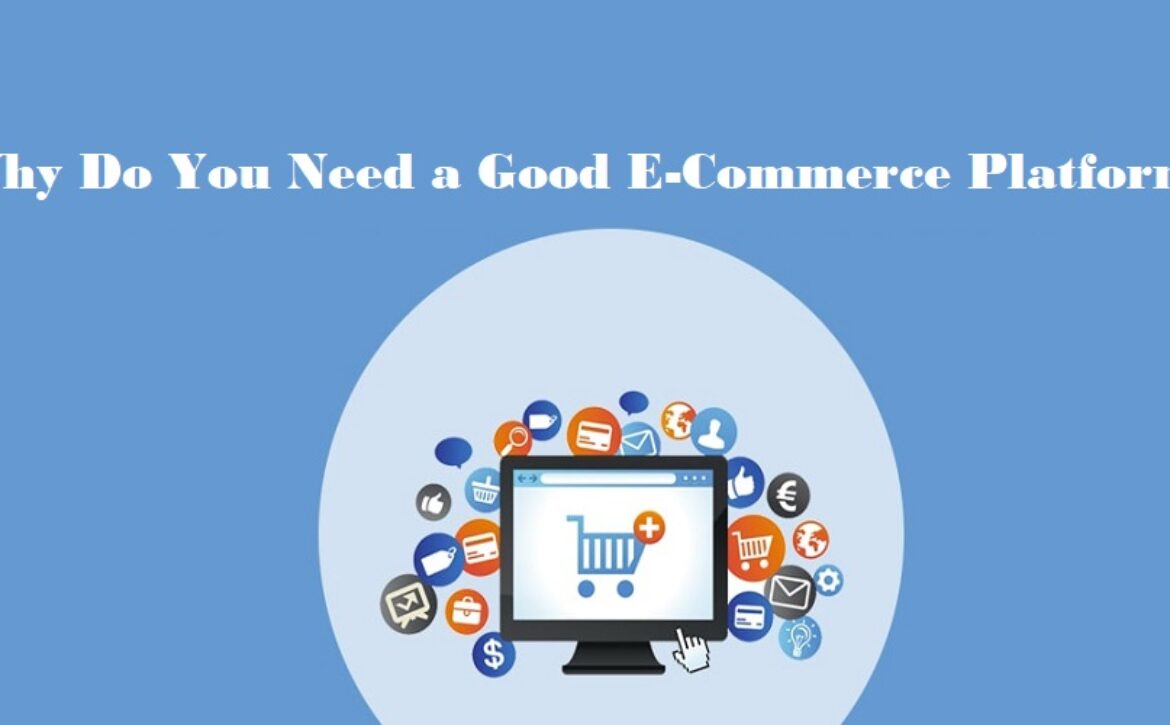
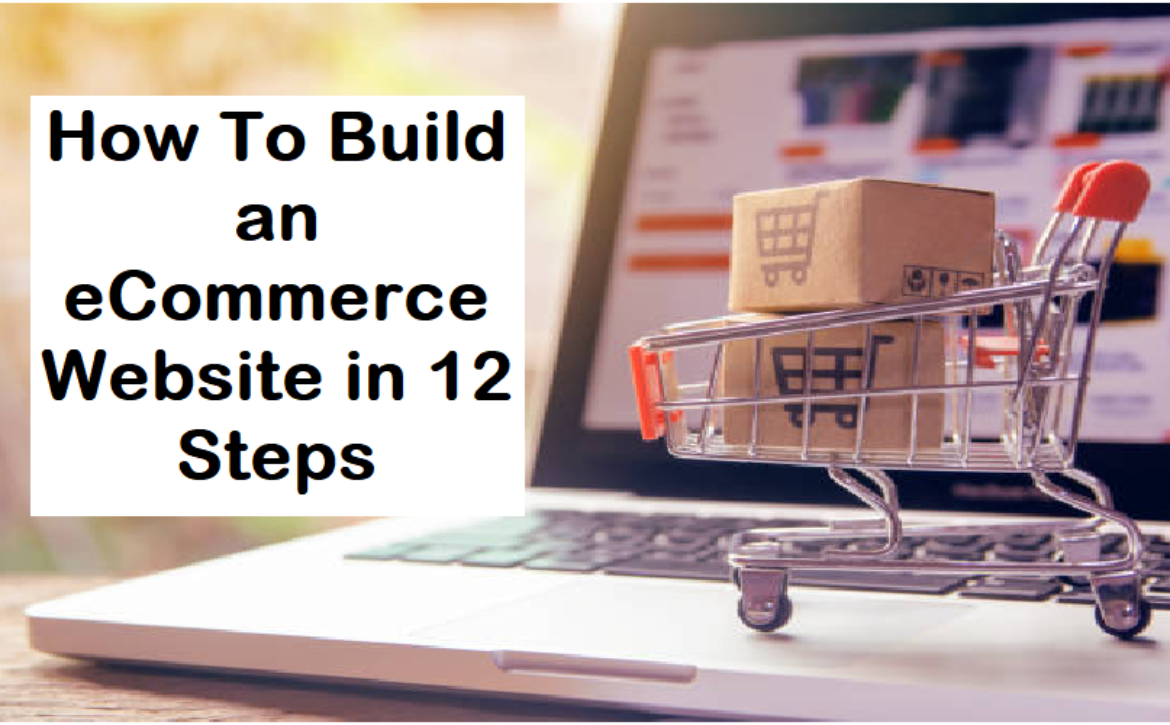
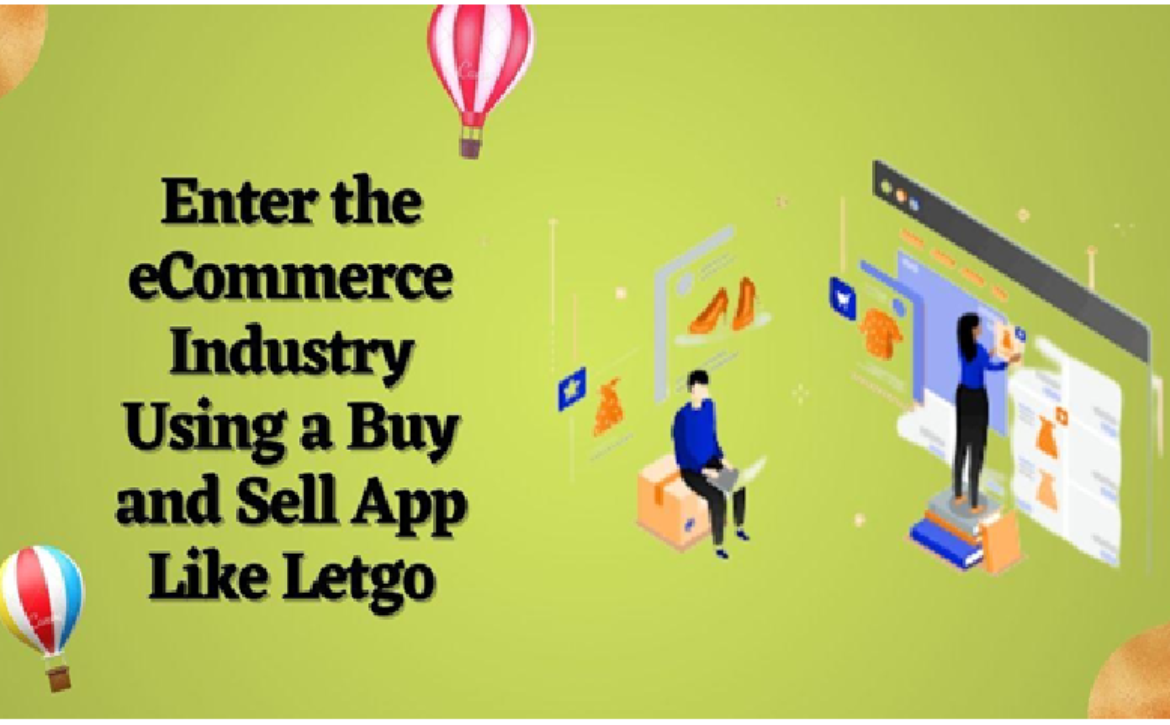
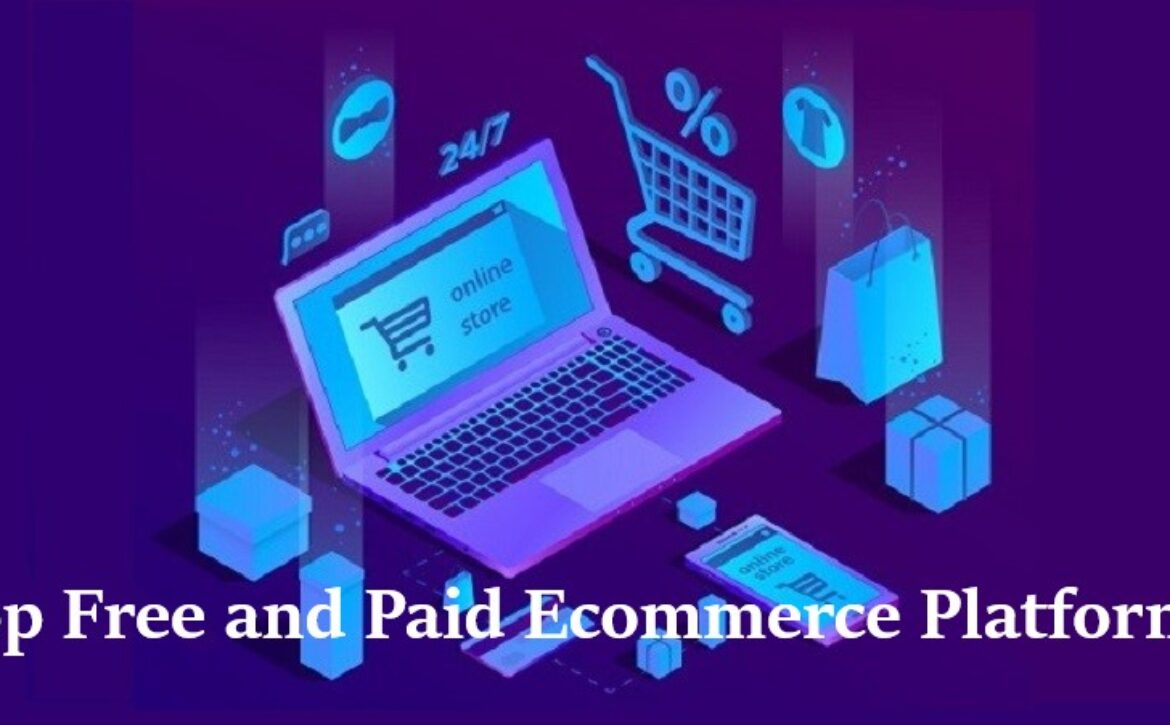
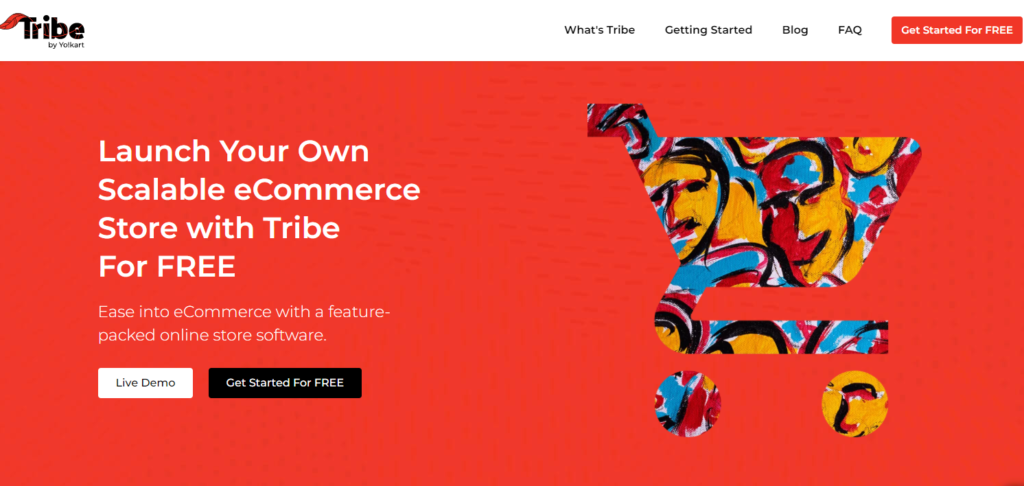 Tribe is an efficient eCommerce platform that allows small and medium businesses to start their eCommerce store for FREE. It is built on Laravel and unlike other free eCommerce platforms, Tribe enables entrepreneurs to create a customizable, seamless, and secure online store with a lifetime license. It also comes equipped with an intuitive drag-and-drop CMS editor that helps in personalizing the storefront with minimal hassle and less coding.
Tribe is an efficient eCommerce platform that allows small and medium businesses to start their eCommerce store for FREE. It is built on Laravel and unlike other free eCommerce platforms, Tribe enables entrepreneurs to create a customizable, seamless, and secure online store with a lifetime license. It also comes equipped with an intuitive drag-and-drop CMS editor that helps in personalizing the storefront with minimal hassle and less coding.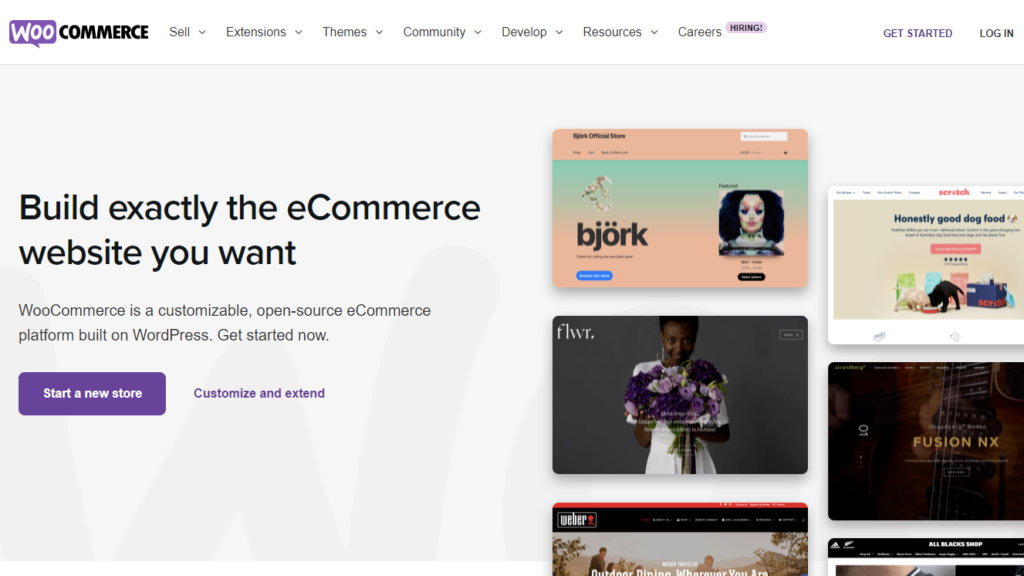 WooCommerce is a self-hosted, open-source eCommerce solution that is built on WordPress. It helps users design product pages, optimize search results, manage multiple customer accounts, orders, inventory, payment, and more. The learning curve for WooCommerce can be stiff as users need to be acquainted with WordPress to be able to use it.
WooCommerce is a self-hosted, open-source eCommerce solution that is built on WordPress. It helps users design product pages, optimize search results, manage multiple customer accounts, orders, inventory, payment, and more. The learning curve for WooCommerce can be stiff as users need to be acquainted with WordPress to be able to use it.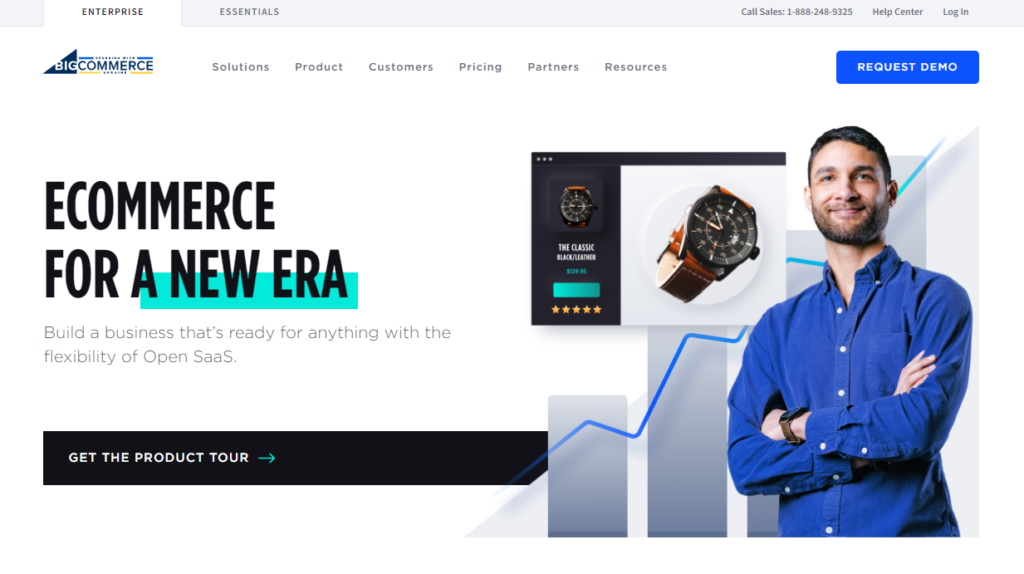 BigCommerce is an eCommerce solution that explicitly focuses on catering to enterprise-level software companies. Being a SaaS-based solution, BigCommerce provides merchants with several hosting and customization options. It is a robust platform that encapsulates advanced in-built features and offers 15 days of a free trial.
BigCommerce is an eCommerce solution that explicitly focuses on catering to enterprise-level software companies. Being a SaaS-based solution, BigCommerce provides merchants with several hosting and customization options. It is a robust platform that encapsulates advanced in-built features and offers 15 days of a free trial.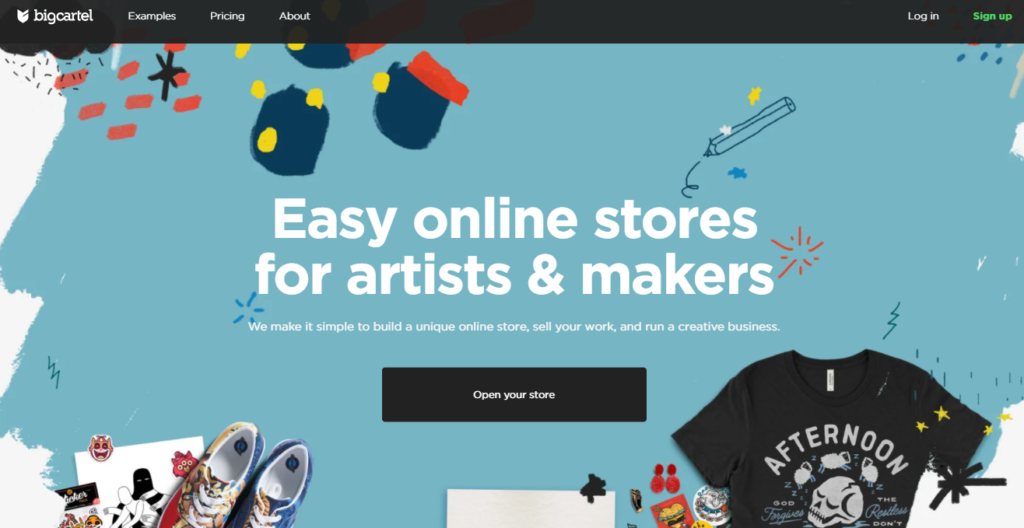 Big Cartel is a hosted eCommerce platform that focuses on serving the needs of creative and artistic individuals. It can be used to create a store that sells handmade products. Promotions and services can also be added. Although Big Cartel started as a platform for creative merchants, it can now be used to sell anything as its user base has expanded.
Big Cartel is a hosted eCommerce platform that focuses on serving the needs of creative and artistic individuals. It can be used to create a store that sells handmade products. Promotions and services can also be added. Although Big Cartel started as a platform for creative merchants, it can now be used to sell anything as its user base has expanded.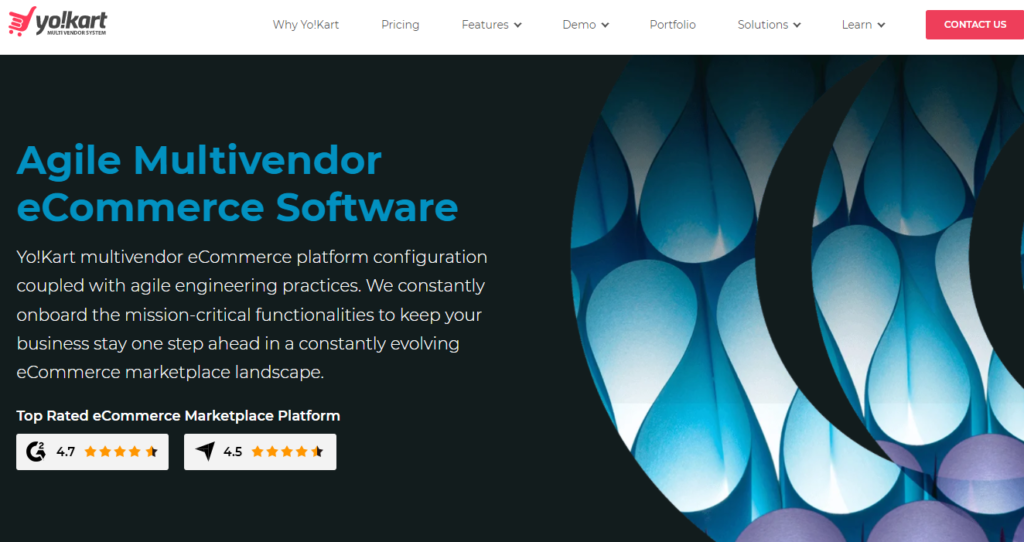 Yo!Kart is one of the best eCommerce platforms that is designed to deliver a ready-to-launch multi-vendor marketplace for businesses of all sizes. It is highly customizable and scalable with all the essential features like tax management, catalog management, streamlined shipping management, and so on. Moreover, Yo!Kart comes equipped with a multi-vendor eCommerce platform for iOS and Android platforms. It also has separate dashboards for admin and seller to streamline the entire eCommerce operations. Further, the admin can control and manage the entire marketplace from the dashboard.
Yo!Kart is one of the best eCommerce platforms that is designed to deliver a ready-to-launch multi-vendor marketplace for businesses of all sizes. It is highly customizable and scalable with all the essential features like tax management, catalog management, streamlined shipping management, and so on. Moreover, Yo!Kart comes equipped with a multi-vendor eCommerce platform for iOS and Android platforms. It also has separate dashboards for admin and seller to streamline the entire eCommerce operations. Further, the admin can control and manage the entire marketplace from the dashboard.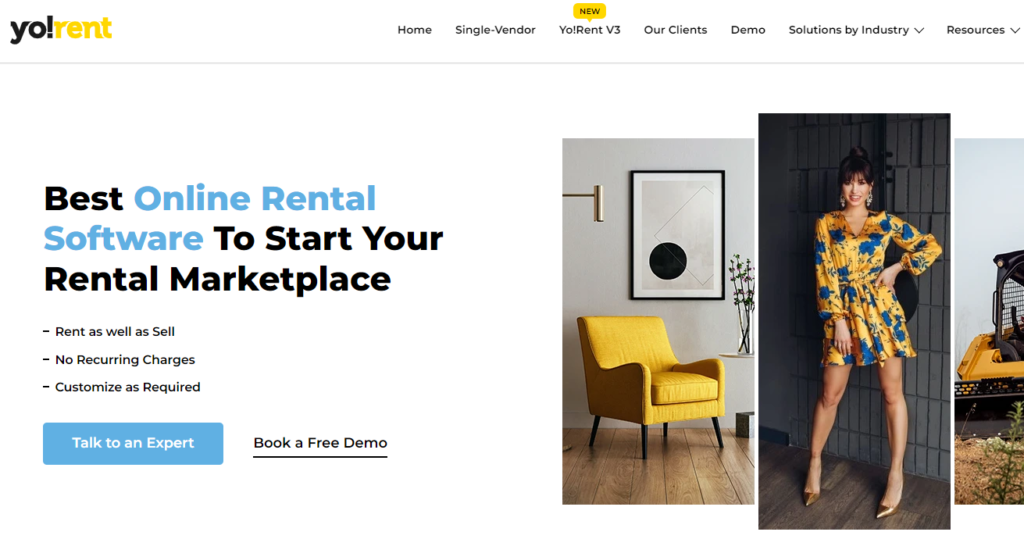
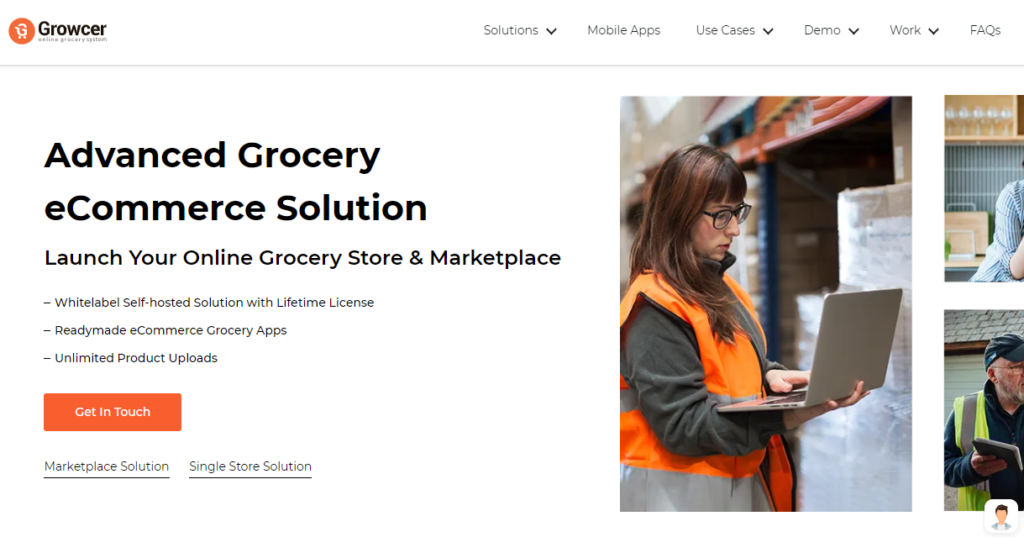 Growcer is a hyperlocal marketplace solution that is built to help grocery store owners to sell their products online. Several other hyperlocal business models for marketplaces like online liquor delivery, epharmacy, pet food, farm products, and so on, can be catered by it. Besides, Growcer is fully customizable and is equipped with robust mobile apps for both buyers and sellers (iOS and Android). There is also a dedicated admin panel that offers a product catalogue system, advanced reports, delivery staff management, and more, providing full control for platform management.
Growcer is a hyperlocal marketplace solution that is built to help grocery store owners to sell their products online. Several other hyperlocal business models for marketplaces like online liquor delivery, epharmacy, pet food, farm products, and so on, can be catered by it. Besides, Growcer is fully customizable and is equipped with robust mobile apps for both buyers and sellers (iOS and Android). There is also a dedicated admin panel that offers a product catalogue system, advanced reports, delivery staff management, and more, providing full control for platform management.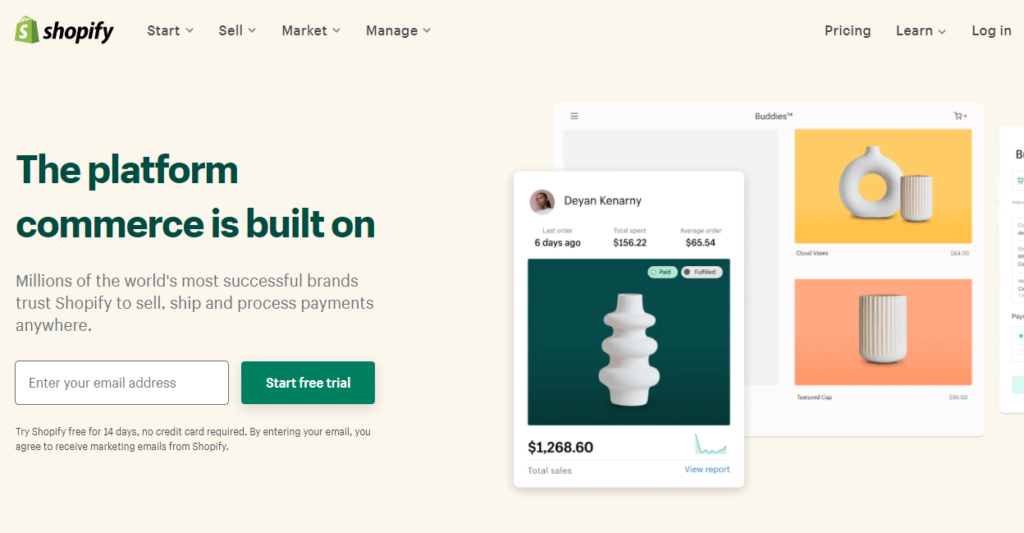 Shopify is a SaaS-based eCommerce platform that helps entrepreneurs and SMBs launch their eCommerce platform with ease. It not only provides themes to customize the design but also helps in increasing sales via several marketing tools. Customer support is provided round the clock and 14 days of free trial is also offered. As an eCommerce solution, Shopify has several features and functionality that can help individuals set up their eCommerce platform with little to no programming experience. Additionally, you can get free and paid apps to customize the online store.
Shopify is a SaaS-based eCommerce platform that helps entrepreneurs and SMBs launch their eCommerce platform with ease. It not only provides themes to customize the design but also helps in increasing sales via several marketing tools. Customer support is provided round the clock and 14 days of free trial is also offered. As an eCommerce solution, Shopify has several features and functionality that can help individuals set up their eCommerce platform with little to no programming experience. Additionally, you can get free and paid apps to customize the online store.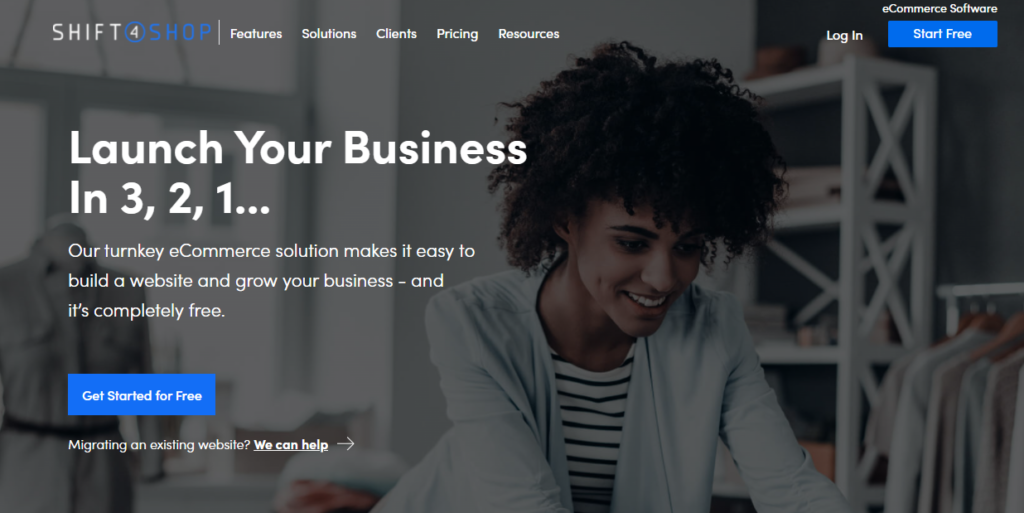 Shift4shop is an all-inclusive cloud-based eCommerce platform that integrates advanced features to create a complete eCommerce website. Moreover, merchants can use 3dcart to create and launch an online store to sell their products, support payments, and fulfill consumer orders. Various fulfillment methods including regular shipping, drop shipping, and downloads are supported by 3dcart. Besides, every 3dcart user can access built-in social media integration, order management, email marketing, SEO tools, and so on.
Shift4shop is an all-inclusive cloud-based eCommerce platform that integrates advanced features to create a complete eCommerce website. Moreover, merchants can use 3dcart to create and launch an online store to sell their products, support payments, and fulfill consumer orders. Various fulfillment methods including regular shipping, drop shipping, and downloads are supported by 3dcart. Besides, every 3dcart user can access built-in social media integration, order management, email marketing, SEO tools, and so on.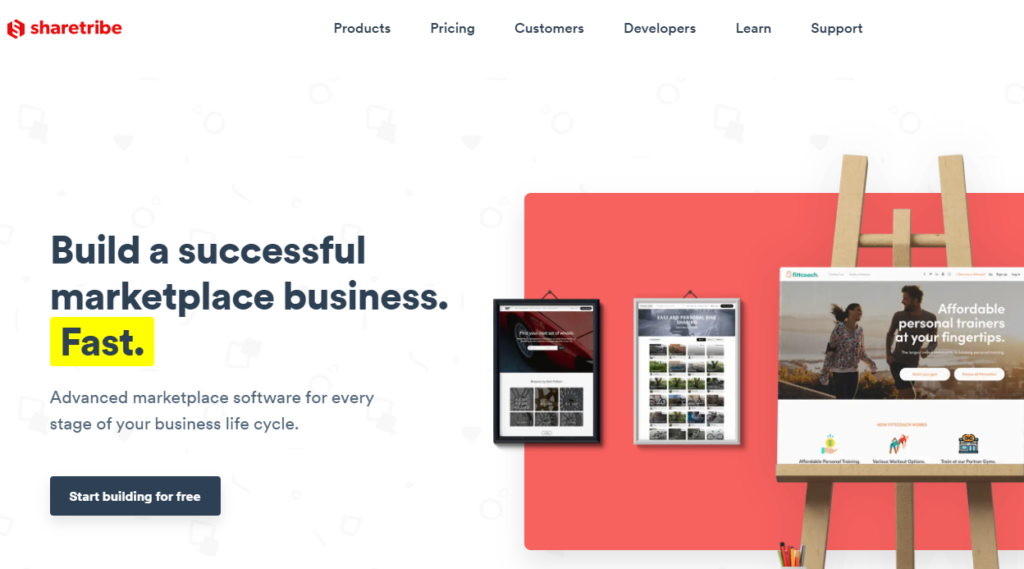 Sharetribe offers an easy way to start your online business marketplace with ease. And, unlike other eCommerce solutions, ShareTribe is designed to support your marketplace through its various life cycles. The platform is available in two different variants as Sharetribe Go and Sharetribe flex. While Sharetribe Go is suitable for entrepreneurs wanting to launch an online marketplace quickly, Sharetribe flex is preferred for those who are looking for customization.
Sharetribe offers an easy way to start your online business marketplace with ease. And, unlike other eCommerce solutions, ShareTribe is designed to support your marketplace through its various life cycles. The platform is available in two different variants as Sharetribe Go and Sharetribe flex. While Sharetribe Go is suitable for entrepreneurs wanting to launch an online marketplace quickly, Sharetribe flex is preferred for those who are looking for customization.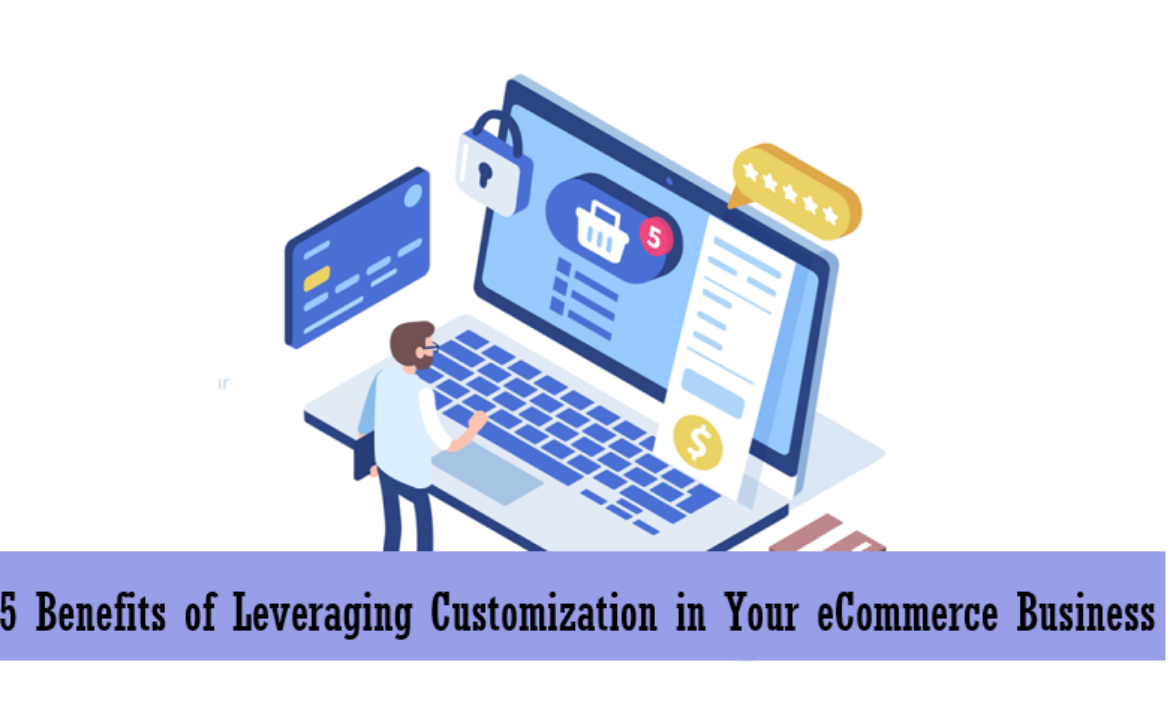
 However, Web to Print Technology has helped streamline this extensive process by putting the power to design in the hands of a customer.
However, Web to Print Technology has helped streamline this extensive process by putting the power to design in the hands of a customer. To implement product customization, you need to integrate a Web to print Tool with your eCommerce platform. For example, if your store is on Magento, you need a
To implement product customization, you need to integrate a Web to print Tool with your eCommerce platform. For example, if your store is on Magento, you need a 
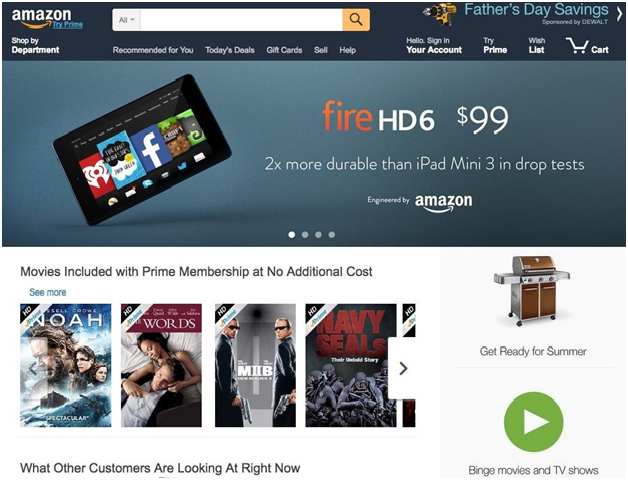
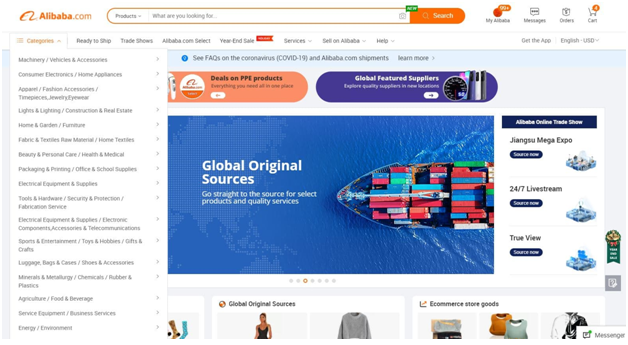 Alibaba is a big name in the industry as it promotes authentic businesses through its platform. There is a big range of products and categories and it includes everything from clothes, crockery, furniture, edibles and even needles. The products are quite affordable and as it is a Chinese platform so the prices are quite cheap. The products have a description that provides ease to the customer and the navigation of the site is also very easy. Moreover, it has 35 million users and countries including Russia, Germany, UK, are the potential buyers of Alibaba. The range of buyers and sellers is also huge with up to 160 million buyers and 60 billion sellers.
Alibaba is a big name in the industry as it promotes authentic businesses through its platform. There is a big range of products and categories and it includes everything from clothes, crockery, furniture, edibles and even needles. The products are quite affordable and as it is a Chinese platform so the prices are quite cheap. The products have a description that provides ease to the customer and the navigation of the site is also very easy. Moreover, it has 35 million users and countries including Russia, Germany, UK, are the potential buyers of Alibaba. The range of buyers and sellers is also huge with up to 160 million buyers and 60 billion sellers.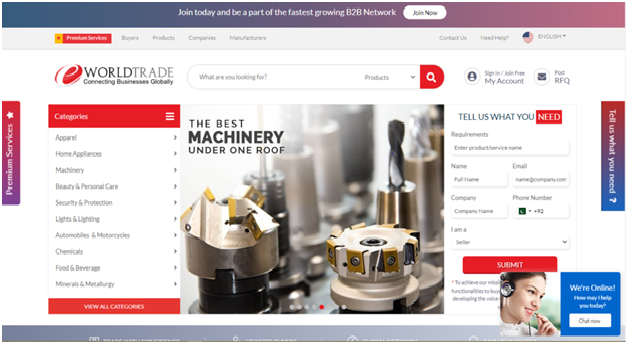 eworldtrade is referred as the fastest-growing B2B platform that brings all the reliable and authentic business in one place. The user interface and the navigation of the site is very easy with integrated chatbots that adds to its attractiveness. The product range is very wide with almost 40 categories. The size of the platform could be understood by the fact that it has 5 million users present online. It has created a benchmark in the world of b2b eCommerce business.
eworldtrade is referred as the fastest-growing B2B platform that brings all the reliable and authentic business in one place. The user interface and the navigation of the site is very easy with integrated chatbots that adds to its attractiveness. The product range is very wide with almost 40 categories. The size of the platform could be understood by the fact that it has 5 million users present online. It has created a benchmark in the world of b2b eCommerce business.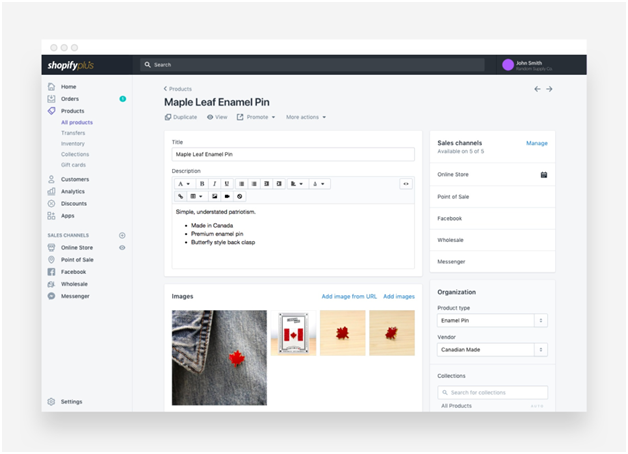 It is a 2B2B platform by Shopify that has 1 million websites. The most amazing thing about it is that it supports all international currencies and languages. Many famous brands use Shopify plus for growing their businesses even wider. It caters to 5300 stores and different businesses are run by merchants in 175 countries. Moreover, it has excellent features like CRM and ERP and It also provides a customized buying experience to its users. It makes pages that include FAQs, policies, and templates about a brand. It not only provides 24/7 customer support but also reviews automated account sign-ups. It provides the option of quick online checkout and also provides the option for reviewing orders before invoicing. All these exceptional services could be availed around the clock.
It is a 2B2B platform by Shopify that has 1 million websites. The most amazing thing about it is that it supports all international currencies and languages. Many famous brands use Shopify plus for growing their businesses even wider. It caters to 5300 stores and different businesses are run by merchants in 175 countries. Moreover, it has excellent features like CRM and ERP and It also provides a customized buying experience to its users. It makes pages that include FAQs, policies, and templates about a brand. It not only provides 24/7 customer support but also reviews automated account sign-ups. It provides the option of quick online checkout and also provides the option for reviewing orders before invoicing. All these exceptional services could be availed around the clock.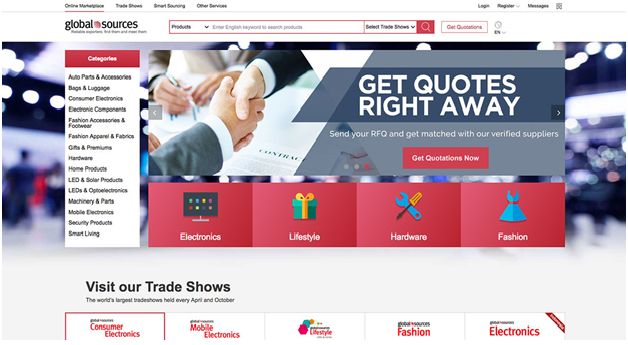 Global sources are another good B2B platform that provides a simple and attractive user interface that has reached 1.9 million international buyers. The quality of the products available on this platform is very good. The products are showcased in a very attractive manner and the gallery includes HD pictures. The ordering procedure is very simple and the navigation is also very easy. It has an advanced e-cart that provides an ease to the customers in finding a product. The international standard is followed when it comes to providing quality services that also help in gaining the satisfaction of the customer.
Global sources are another good B2B platform that provides a simple and attractive user interface that has reached 1.9 million international buyers. The quality of the products available on this platform is very good. The products are showcased in a very attractive manner and the gallery includes HD pictures. The ordering procedure is very simple and the navigation is also very easy. It has an advanced e-cart that provides an ease to the customers in finding a product. The international standard is followed when it comes to providing quality services that also help in gaining the satisfaction of the customer.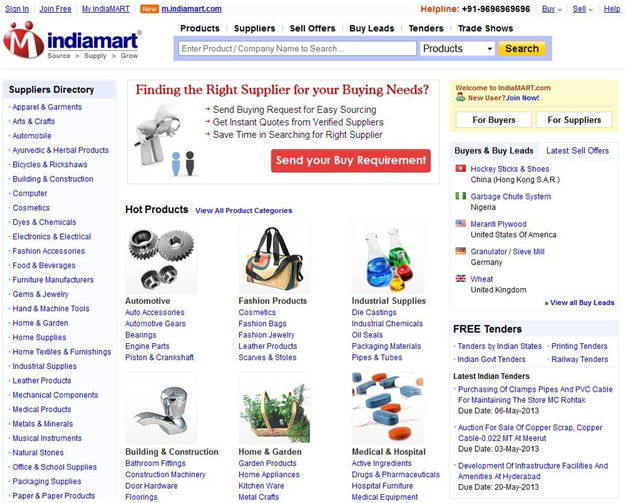 This B2B platform has been successful in maintaining a reputable position in the B2B market. Many businesses prefer to work with IndiaMART as they offer flexible policies and trading services. It is an Indian company with almost 98 million buyers and 5.9 million suppliers. The headquarter of the company is located in Noida. The desired products could be found easily by using filters. The success of this platform could be understood by the fact that it has got 10 million downloads. Moreover, it enjoys a 4.7 rating on Android.
This B2B platform has been successful in maintaining a reputable position in the B2B market. Many businesses prefer to work with IndiaMART as they offer flexible policies and trading services. It is an Indian company with almost 98 million buyers and 5.9 million suppliers. The headquarter of the company is located in Noida. The desired products could be found easily by using filters. The success of this platform could be understood by the fact that it has got 10 million downloads. Moreover, it enjoys a 4.7 rating on Android.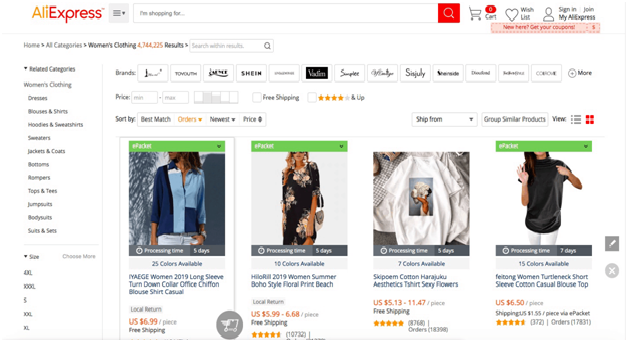 Ali Express extends its services online to many businesses and is owned by the Alibaba group. The popularity of the platform can be identified by the fact that it is the most used e-commerce platform in Russia. It is considered the 10 most frequently used site in Brazil. It extends services in many languages by breaking the language barriers. The language it offers includes Italian, Dutch, German, Portuguese, Indonesian, Polish, Spanish, Russian and Turkish.
Ali Express extends its services online to many businesses and is owned by the Alibaba group. The popularity of the platform can be identified by the fact that it is the most used e-commerce platform in Russia. It is considered the 10 most frequently used site in Brazil. It extends services in many languages by breaking the language barriers. The language it offers includes Italian, Dutch, German, Portuguese, Indonesian, Polish, Spanish, Russian and Turkish.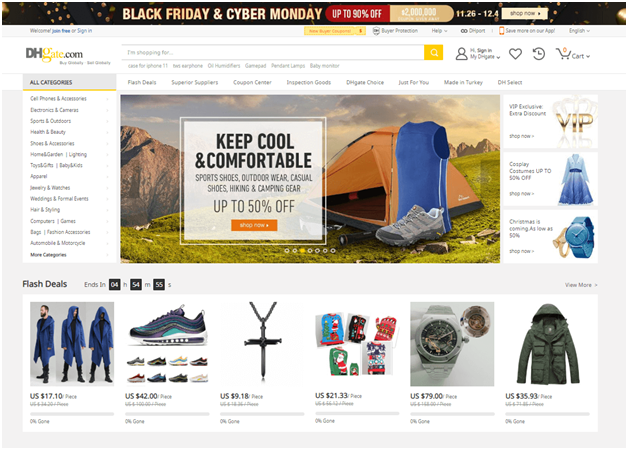 The most incredible thing about DHgate is that it offers 30 million products online. It is a Chinese platform and is very famous in Asia because of the demand for Chinese products there. To provide quality products to the client’s only certified products are up on the website. The services are available in many languages from Chinese, Spanish, Russian, German, Portuguese, Italian, and French. But the services are available in English to cater wide audience. It has 36.4 million registered users that belong to 223 different countries. There are a big number of suppliers that are 2.3 million in number.
The most incredible thing about DHgate is that it offers 30 million products online. It is a Chinese platform and is very famous in Asia because of the demand for Chinese products there. To provide quality products to the client’s only certified products are up on the website. The services are available in many languages from Chinese, Spanish, Russian, German, Portuguese, Italian, and French. But the services are available in English to cater wide audience. It has 36.4 million registered users that belong to 223 different countries. There are a big number of suppliers that are 2.3 million in number.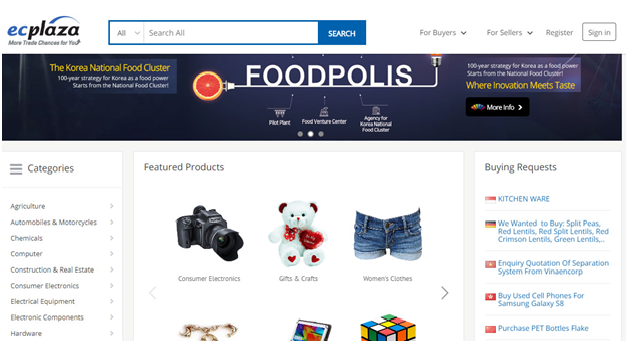 This B2B platform has a wide range of products that are of Korean origin as it is a Korean company. But at the same time, EC plaza also offers international products. It started its services in 1996 and has been providing service for the last 25 years. The interesting and incredible thing to note about this platform is that it is the only platform to offer 4 million products on its site. The visibility of the site is great as it has 400000 members and high brand recognition. It provides services from well-known brands to keep the quality up to the mark.
This B2B platform has a wide range of products that are of Korean origin as it is a Korean company. But at the same time, EC plaza also offers international products. It started its services in 1996 and has been providing service for the last 25 years. The interesting and incredible thing to note about this platform is that it is the only platform to offer 4 million products on its site. The visibility of the site is great as it has 400000 members and high brand recognition. It provides services from well-known brands to keep the quality up to the mark.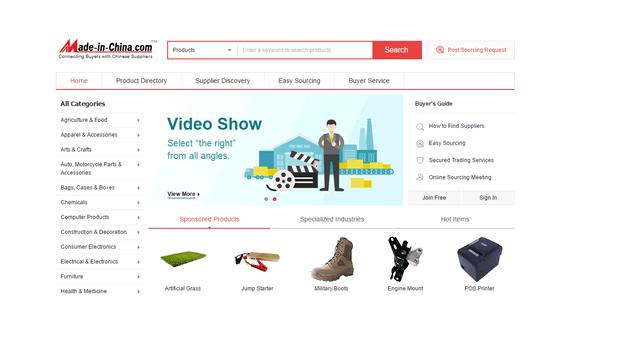 Made-in-China offers products and services at a very cheap rate to provide ease to its customers. It offers transactions in three easy steps that attract users. It has a huge number of manufacturers, trade agents, retailers, wholesalers that are 6 million in number. Moreover, it holds many virtual exhibitions and video streaming sessions. It also enables live chat for its users. It caters to products related to
Made-in-China offers products and services at a very cheap rate to provide ease to its customers. It offers transactions in three easy steps that attract users. It has a huge number of manufacturers, trade agents, retailers, wholesalers that are 6 million in number. Moreover, it holds many virtual exhibitions and video streaming sessions. It also enables live chat for its users. It caters to products related to 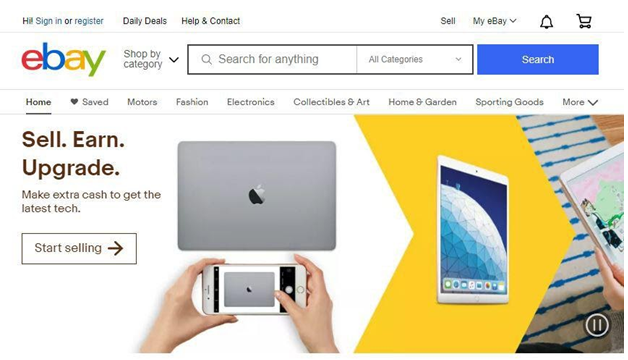 eBay was founded in 1995 and has been providing services for 25 years. It is located in San Jose and California and extends its services to 24 countries including the USA, Australia, Belgium, Canada, Italy and Ireland. The site uses advanced features and provides expert navigation to its users. Moreover, the interface is user-friendly that keeps the customers on hold for a longer time. It is an authentic platform and tries to maintain its authenticity by only permitting authentic sellers on the site. It provides an auction section that makes it more prominent among the other platforms. It offers multiple payment methods and the checkout is also very easy.
eBay was founded in 1995 and has been providing services for 25 years. It is located in San Jose and California and extends its services to 24 countries including the USA, Australia, Belgium, Canada, Italy and Ireland. The site uses advanced features and provides expert navigation to its users. Moreover, the interface is user-friendly that keeps the customers on hold for a longer time. It is an authentic platform and tries to maintain its authenticity by only permitting authentic sellers on the site. It provides an auction section that makes it more prominent among the other platforms. It offers multiple payment methods and the checkout is also very easy.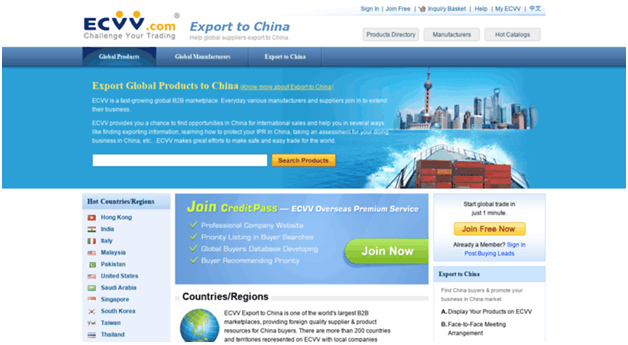 ECVV offers products related to home, construction, automobile, etc. It was made in 2003 and has a wide range of suppliers that are 1 million in number. It takes care of the authenticity and makes sure that all the suppliers go through a verification process so that only original companies can collaborate. It’s a reliable platform because it is recommended by the American International Business Council and Shenzhen Government. Services are provided in English and Chinese language. The annual trade of ECVV is 2$ billion. The user interface is quite friendly and the products are arranged in an organized manner with descriptions and details in the right place to provide ease to the customers. Custom clearance and logistics are also provided by this platform.
ECVV offers products related to home, construction, automobile, etc. It was made in 2003 and has a wide range of suppliers that are 1 million in number. It takes care of the authenticity and makes sure that all the suppliers go through a verification process so that only original companies can collaborate. It’s a reliable platform because it is recommended by the American International Business Council and Shenzhen Government. Services are provided in English and Chinese language. The annual trade of ECVV is 2$ billion. The user interface is quite friendly and the products are arranged in an organized manner with descriptions and details in the right place to provide ease to the customers. Custom clearance and logistics are also provided by this platform.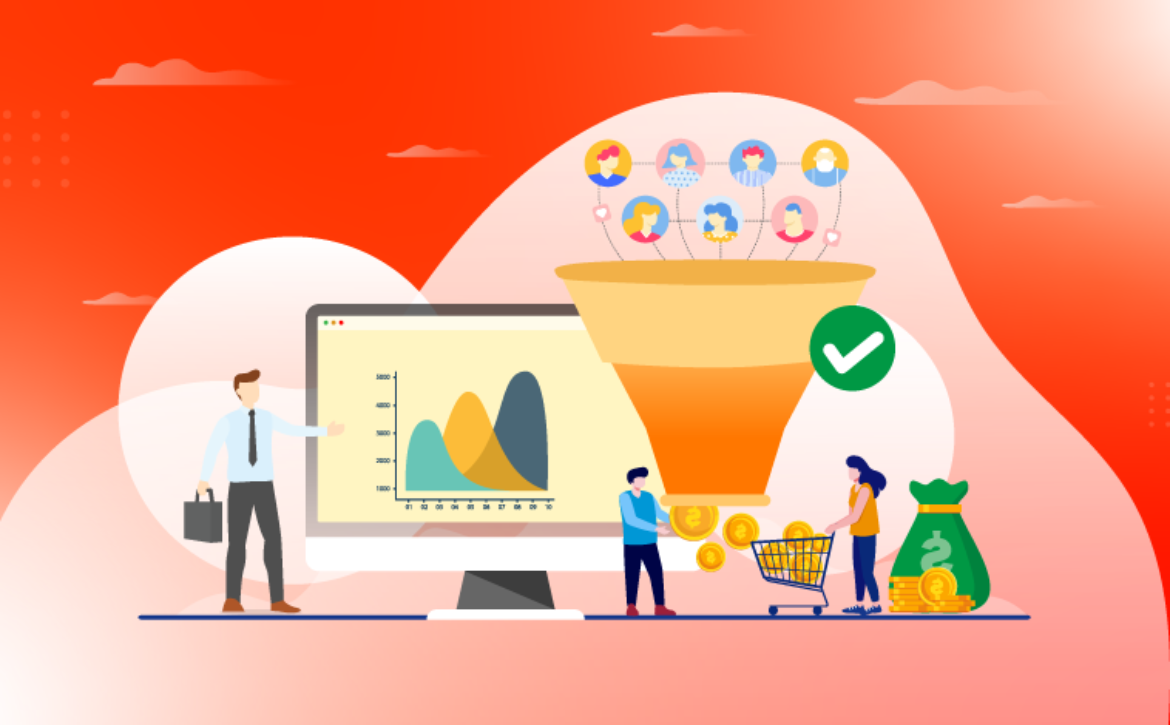
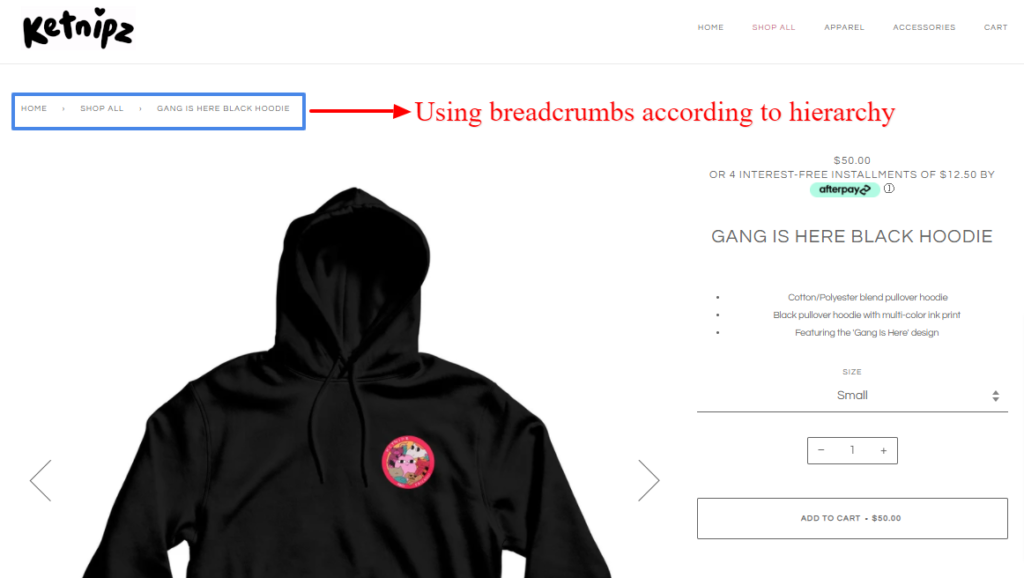
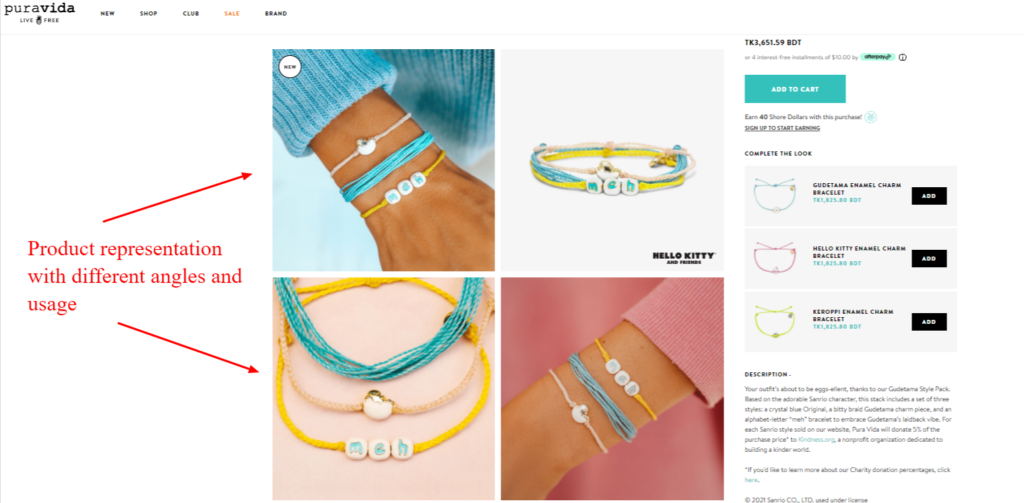

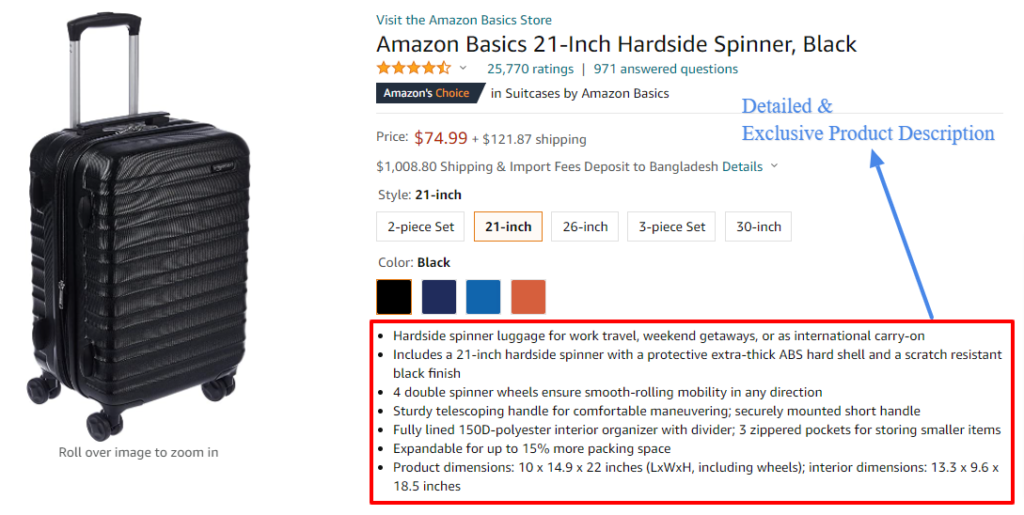
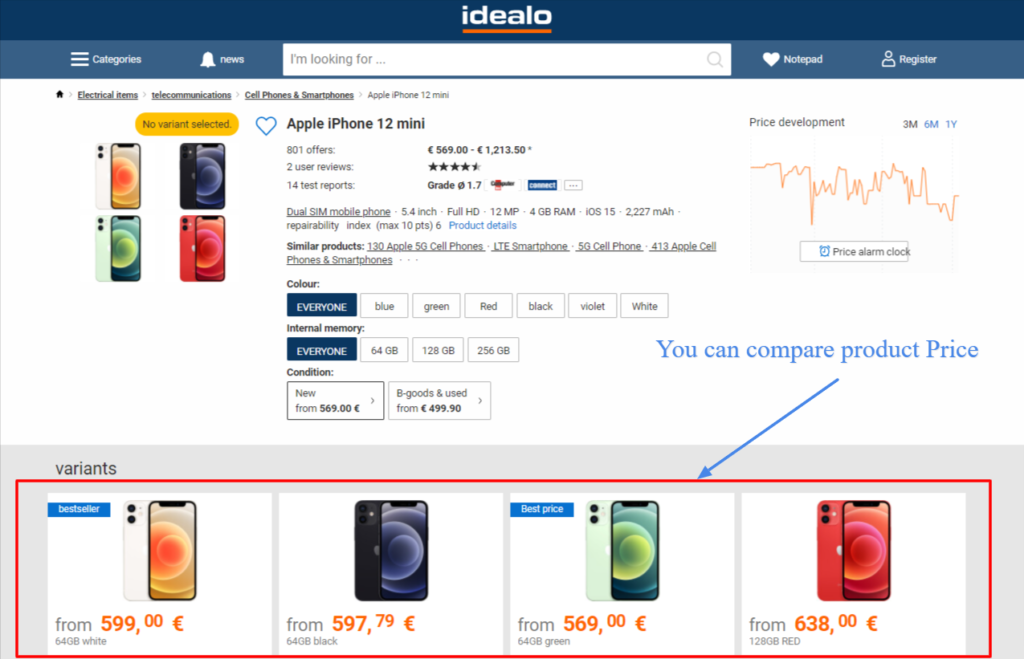

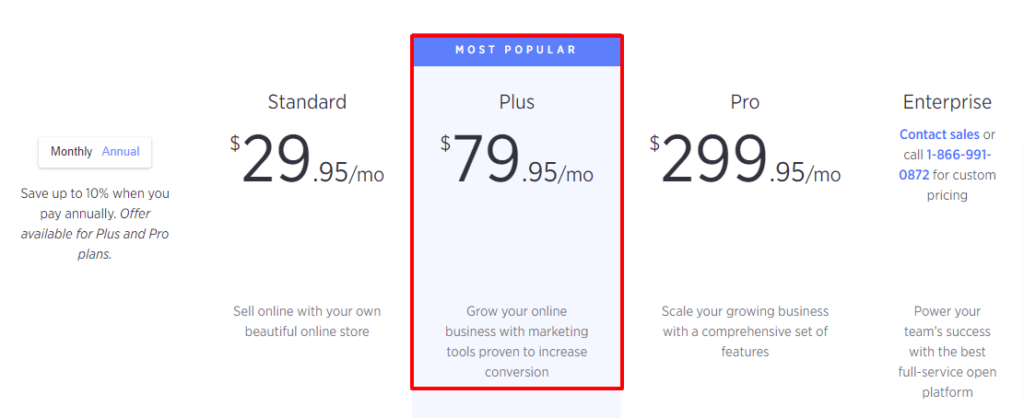
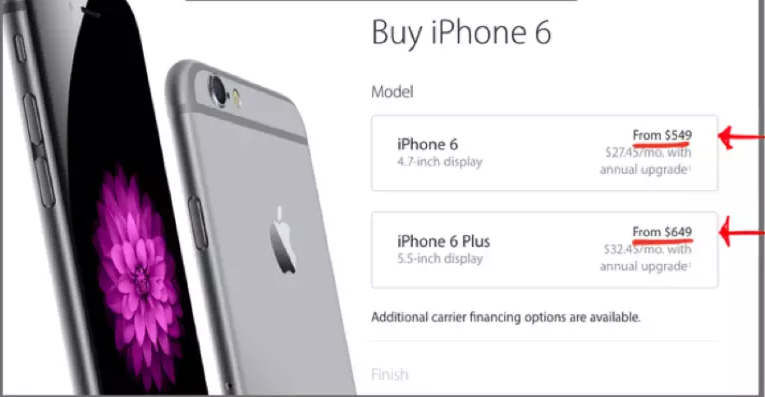
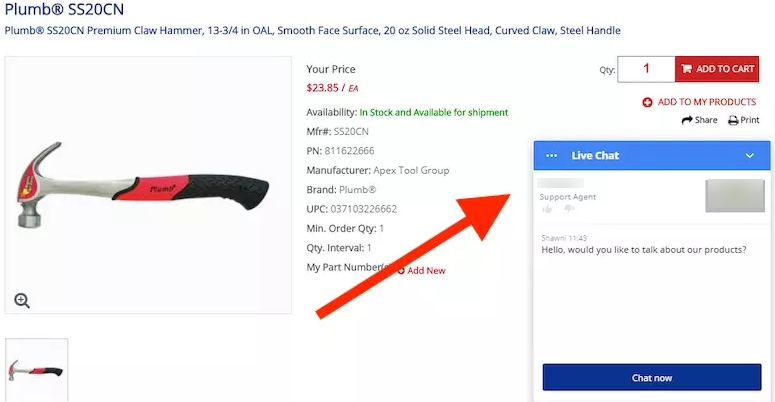
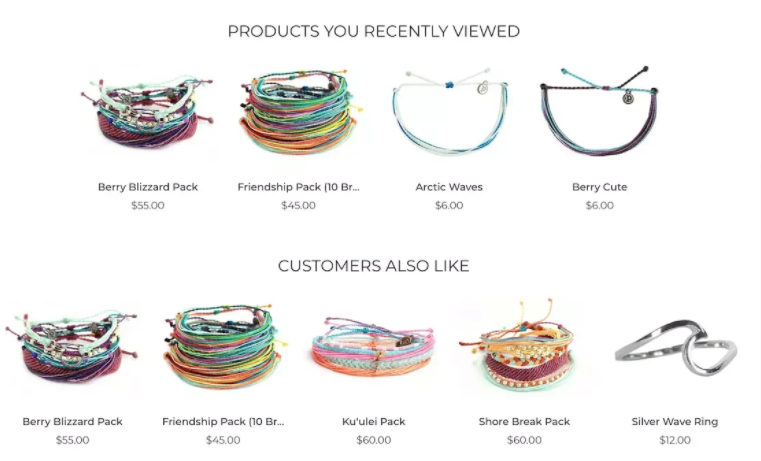
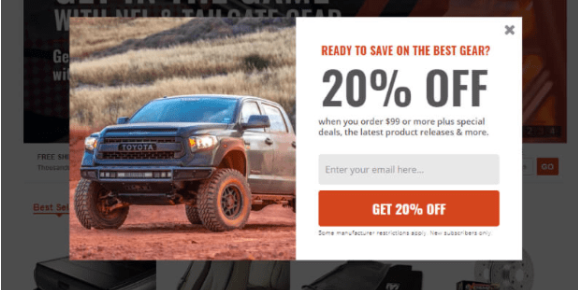
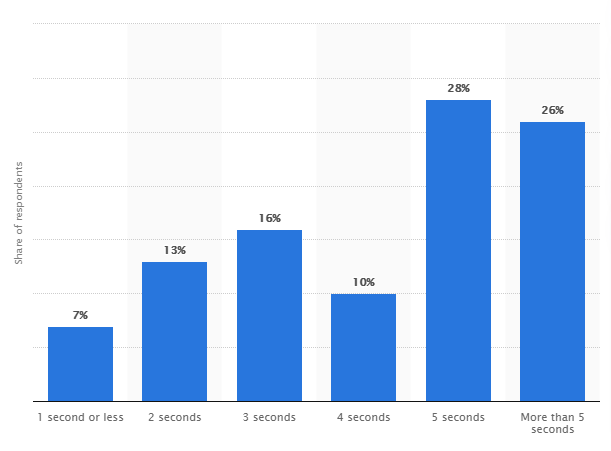
 To optimize the speed of your site, you apply the following techniques:
To optimize the speed of your site, you apply the following techniques: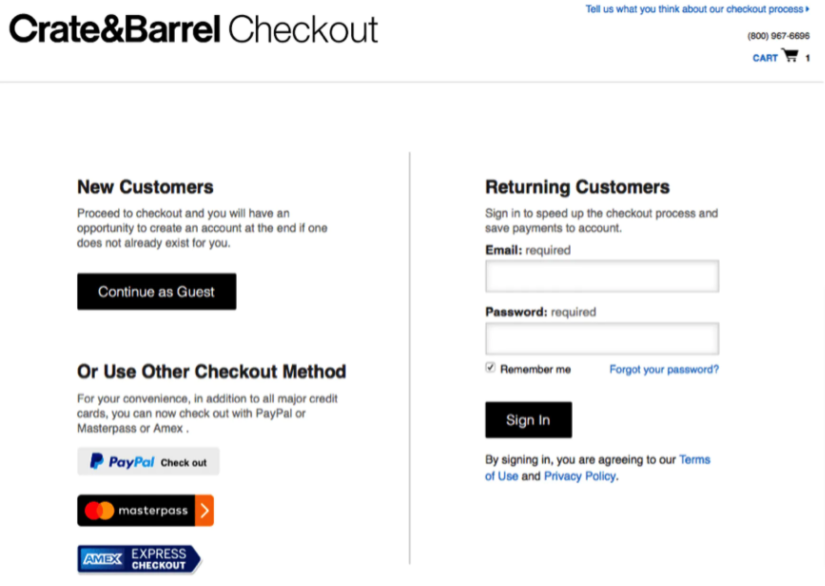

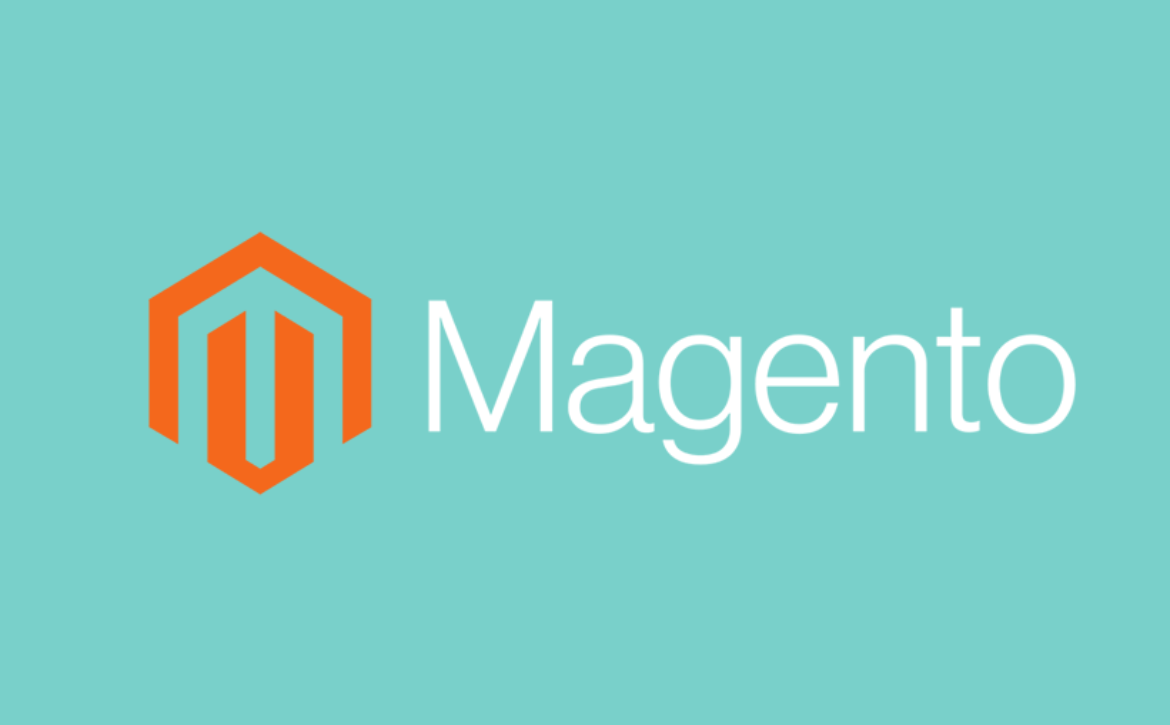
 Benefits of Landed Cost Feature
Benefits of Landed Cost Feature  – Smart One Step Checkout
– Smart One Step Checkout 